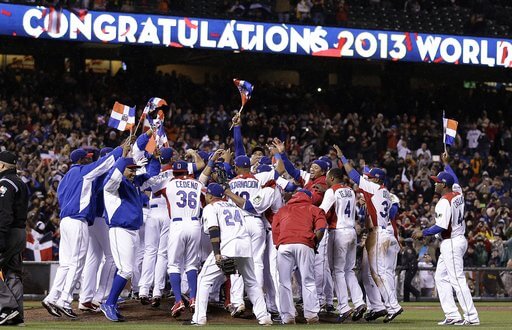Baseball in the Dominican Republic
![dominican-republic-baseball]()
Over the last 100 years, baseball in the Dominican Republic has become much more than a national pastime. Children are practically born into it many born with a natural talent. During the last decade, the baseball industry has consistently expanded in the Dominican Republic. All major league teams have training camps there, to scout and train players with professional potential.
From the time they are little, Dominican boys are enticed by the dream of a professional career in baseball. Many perceive this as their only opportunity to escape a life of poverty. The problem is there is no emphasis placed on educating these young boys. Boys drop out of school as early as age 10, 11, and 12 to practice baseball full time. While this is great for the boys that “make it,” becoming baseball stars with million-dollar major league contracts, the reality is that ninety-eight percent don’t. Sadly, these 18- and 19-year-old young men return home to their communities, uneducated, unskilled, and destined to a life of poverty.
History of the Island
In 1492 when Columbus sailed the ocean blue he landed on the north shore of the Dominican Republic. He originally named it “La Española”, and his son, Diego, was its first viceroy. The capital, Santo Domingo, founded in 1496, is the oldest European settlement in the Western Hemisphere where you will find the first formal streets, the first bank and many other firsts of the “new world.”
Spain ceded the colony to France in 1795, and Haitian blacks under Toussaint L’Ouverture conquered it in 1801. In 1808, the people revolted and captured Santo Domingo the next year, setting up the first republic. Spain regained title to the colony in 1814. In 1821 Spanish rule was overthrown, but in 1822 the colony was reconquered by the Haitians. In 1844, the Haitians were thrown out and the Dominican Republic was established, headed by Pedro Santana. Uprisings and Haitian attacks led Santana to make the country a province of Spain from 1861 to 1865.
President Buenaventura Baez, faced with an economy in shambles, attempted to have the country annexed to the U.S. in 1870, but the U.S. Senate refused to ratify a treaty of annexation. Disorder continued until the dictatorship of Ulises Heureaux; in 1916, when chaos broke out again, the U.S. sent in a contingent of marines, who remained until 1924.
A sergeant in the Dominican army trained by the marines, Rafael Leonides Trujillo Molina, overthrew Horacio Vasquez in 1930 and established a dictatorship that lasted until his assassination in 1961, 31 years later. In 1962, Juan Bosch of the leftist Dominican Revolutionary Party, became the first democratically elected president in four decades.
Education
![_MG_1177]()
In the Dominican Republic (from 1996 to 2005), the primary school net attendance rates were high – 84 percent boys and 88 percent girls – with nearly all children entering school. Of those who entered primary school in 2000, 69 percent of boys and 89 percent of girls reach the fourth grade, making male retention an issue. Secondary school net attendance rates are less than half the primary net attendance rates – 27 percent for boys and 39 percent for girls. Children in urban areas attend secondary school by up to 15 percent more than rural kids.
Developmental programs are baseball training programs that are designed to get baseball players, as young as 10 years old, ready to be signed by major league academies. These programs are run by one of the 5,000 buscones (independent scouts, who find, feed, and train the players) in the Dominican. The buscones are often corrupt and accused of exploiting these young boys, by taking sometimes as much as 50 percent of a ballplayer’s signing bonus if the ballplayer gets drafted by an academy, although the legal limit is 30 percent. It is estimated that only two to five percent of all kids who play in a program ever get signed by an academy.
![_MG_1125]()
Academies are official farm teams for major league organizations located in the Dominican Republic. Boys must be at least 16 and a half years old to get signed by an academy. The academies will often pay players a bonus between $5,000 and $25,000 (U.S.) to sign the contract. These signing bonuses can sometimes be more than $2,000,000; however, large contracts are extremely rare with only one player ever receiving more than two million. While in the academies, all the baseball players receive the same monthly salary, ranging from $600 to $1,000 depending on the organization. Once an MLB team signs a player in the Dominican Republic, the players have seven levels to get through (DSL, Rookie League, High Rookie League, Low Class A, High Class A, Double A, Triple A) before making it to the American major leagues.
MLBAfter the United States, the Dominican Republic has the second-highest number of baseball players in MLB, making Dominicans the largest number of foreign professional baseball players. At the start of the 2006 season, there were 744 players on opening rosters, of which 76, or 10.22 percent, were from the Dominican Republic.
At the end of 2005 there were 1,556 Dominicans under contract in major league teams. At the end of 2006 there were already 3,200 Dominican players, or a 105 percent increase. Ronaldo Peralta, the MLB representative in the Dominican Republic, said that MLB invests about US$84 million to train ball players on the island, and their operations generate over 2,000 jobs. Of the 30 MLB teams, 29 have academies in the Dominican Republic. In 2006, 508 Dominicans were harvested by Major League Baseball academies. This is 26 percent more than the 403 recruited in 2005.


